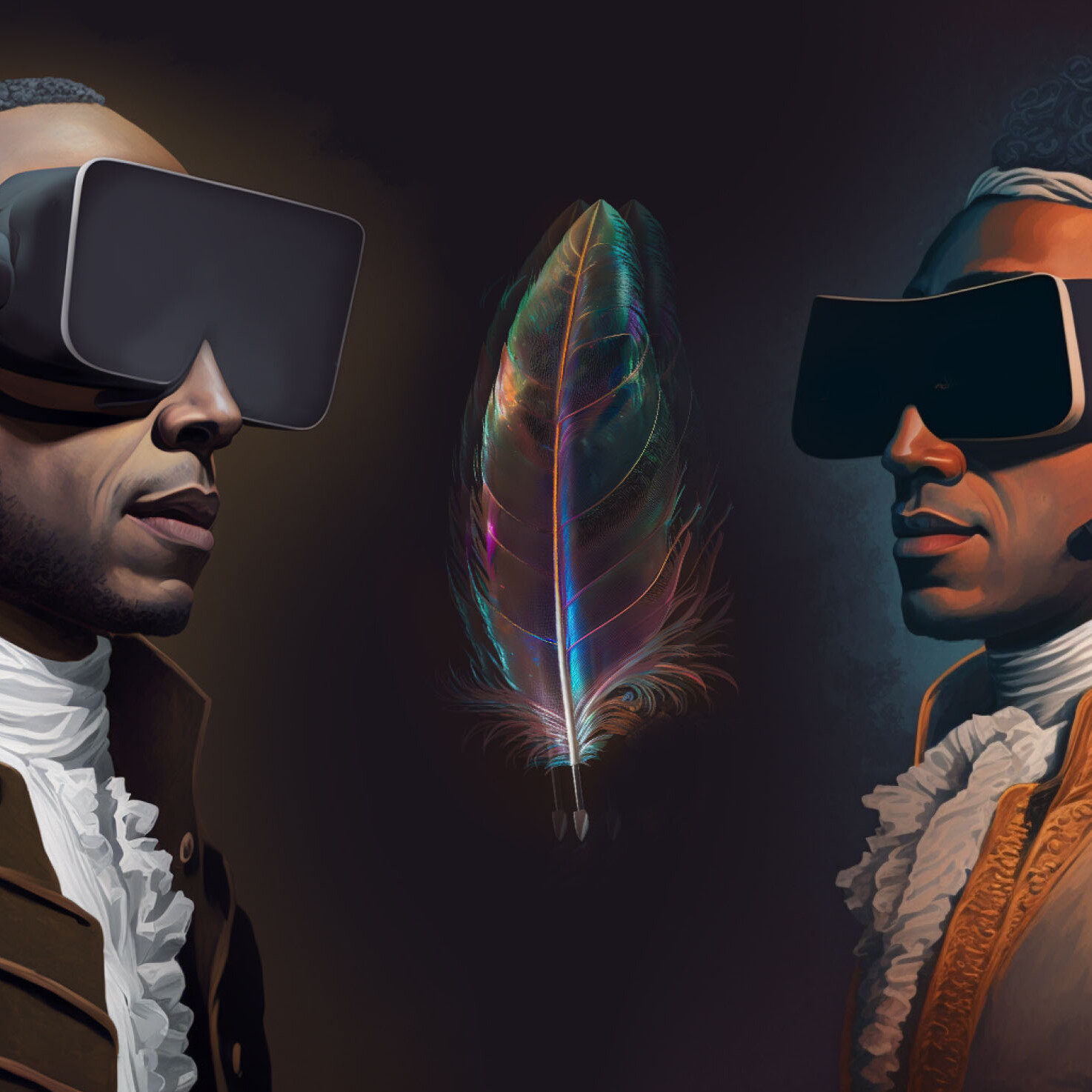The word metaverse has so totally saturated the technology sector that its rampant overuse and misuse have become its own downfall. The metaverse needs a reality check and a regrounding in human needs.
People use the term to describe nearly any AR or VR experience, or any sufficiently expansive, or merely popular, virtual game. It’s been used interchangeably with Web3, and has become intertwined with the concept of digital ownership enabled by NFTs. People argue that the metaverse has existed since VRChat, or since Second Life before that. Some say the term is simply a construct of branding. This lack of concrete meaning has led Apple and other companies to push back on the concept entirely. Tim Cook is quoted in Forbes saying, “I’m really not sure the average person can tell you what the metaverse is.”
So, where does that leave us now? We believe that the concept of the metaverse needs a reality check—one based on how people want to use technology to meet their needs. Contrary to popular opinion and its typical depiction, the metaverse will not be fully virtual, but a convergence of both digital and physical. As immersive technologies emerge, grow, and align as stepping stones to a world where our digital and physical realities become one, we should ask ourselves: how might this new paradigm create opportunities to better support and enable the people who use it?
As we’ve moved from personal to mobile computing, and as we look ahead toward the metaverse, we experience and invite increasing convergence of our digital and physical realities.
The Metaverse Today
Design for Immersive Connection
We’ve seen seismic shifts in technology before—personal computing, a connected Web, broad adoption of smartphones. None of them were immediate, they were all an evolution sparked by a huge idea and built on the technology from the previous big idea. The transition to wider metaverse acceptance is no different. It’s a slow, compounding process, but the increasing intertwining of our digital and physical worlds, that connection between people, spaces, and worlds, will continue to grow over time.
Products that provide natural ways to enrich connections across spaces, senses, and communities are gaining rapid, sustainable traction. We’ve seen this trend increase over the past year with immersive art exhibitions on Van Gogh and Picasso, as well as experiential events for pop culture media like Stranger Things and Bridgerton. The public’s craving for immersion represents a broader shift towards richer multisensory experiences and the rise of spatial computing. And while those terms may sound grandiose, this trend is already manifested in technologies we use every day—the IoT devices and smart speakers in our homes, the heads-up displays and assistive driving features in our vehicles, the wearables on our wrists, and the voice agents in our ears, the use of geolocation to track people and objects globally. Designers and businesses that understand and employ a combination of these immersive technologies will uncover boundless possibilities for new experiences and new value.
Today there’s not just one single metaverse, and the concept of a single unified metaverse that serves as the new iteration of the web is not something we expect any time soon. In our 2023 FutureView Design Trend Report, we explore the stage of readjustment facing companies this year, the need to consciously calibrate from hype to reality. In the near term, we’re advising partners to strive to make their products more immersive and to seek out opportunities for more natural interactions and more meaningful ways to connect. Forge connections between people across time and space, between interactive and sensory modalities, between siloed content and services, and between physical and digital worlds.
Punchcut has been working on experience concepts that combine immersive technologies like XR and spatial computing. In this demo, a student attends an art history lecture remotely. She collaborates with other members of the class, and inspects the sculpture in question in AR using gestural interactions.
Dimensions of the Metaverse
Center on Core Human Needs
At Punchcut we believe the metaverse is not merely a technology like the transistor, the telephone, or the touchscreen, but rather a concept defined by the sentiment it stirs in each human being. We see the metaverse phenomenon as a mass desire to enrich the everyday, to represent oneself authentically, to connect with others meaningfully, and to give people the power to shape their own experience. This concept can be recognized by an experience that enables four core dimensions centered on basic human needs—immersion, identity, community, and agency.
Immersion
Life itself is immersive and people want more natural interactions regardless of their digital or physical context. Many of today’s digital experiences are still bound by flat screens, disconnected from their physical surroundings, but we envision a future of Natural Immersion—spatial, sensory, and seamless experiences where people interact with their digital life and real-world spaces in more natural ways.
The most successful immersive experiences feel authentic. Engaging a majority of the senses takes an experience from conceivable to convincing. For people to enter a flow state, they must be entirely present and focused with interest and passion. These experiences are typically manifested in 3D spatial environments that engage a variety of senses. By creating unique multisensory interactive experiences, designers can achieve unparalleled levels of engagement and intimacy.
Identity
To create spaces people want to inhabit and return to, people must be able to show up fully as themselves. Having a secure and comfortable identity is important to being seen and heard. People need a continuous but flexible profile that travels between spaces and adapts to context so they can maintain and control their sense of self as they navigate worlds. This permits the exchange of information and value across spaces, ensures continuity of experiences and relationships, and cultivates a sense of autonomy and ownership over oneself.
Community
People seek connection in all experiences. Being social is an inherent aspect of being human. We search for contact, for companionship, for community. We seek out experiences that connect us to those around us. The ability to interact, communicate, and relate to other people via the metaverse is crucial. Generating a sense of community and connection allows people to feel safe and encouraged to enter and explore freely and confidently.
Agency
All of the above sentiments surrounding identity, immersion, and community serve as prerequisites for the most important need of all—agency. When people know who they are, are grounded in their environment, and feel supported by their circle, they have the confidence to act autonomously. This agency enables people to make concrete choices that are visible, that affect their world and others in it with persistent results. An effective metaverse should be malleable and shaped by its inhabitants. People should feel empowered to speak up, to move and act with intention throughout and across worlds.
We’ve been developing concepts that explore the boundaries and connections between immersive spaces. In this experience, our student takes a virtual field trip to the Metropolitan Museum of Art. She browses the collection from afar and uses the art itself as a way to pivot between virtual locations and time periods, from Degas’ sculpture in the present-day Met to the Paris Opera of the 1800s to the Montmartre studio of the artist himself.
The Metaverse of Tomorrow
Set the Course of Innovation
While the hype of recent years has been overwhelming, the opportunities for the future of the metaverse are exciting and transformative. It represents a major evolution in human-machine interaction and an opportunity for creative new products, experiences, services, economies, and communities. This transition into widely connected immersive experiences will drive technological innovation and new interaction modalities. These transitional periods reshape user behaviors and expectations, and signal massive growth opportunities for companies that recognize them.
As the metaverse evolves, people will experience a deeper sense of immersion, identity, community, and agency. The digital and physical will become more connected with more multimodal connection points. And connections between metaverses will evolve the concept into a single unified experience. At this stage, the metaverse will function through true connectivity and interoperability. Like all technological evolution, the convergence of the metaverse will be driven forward by people. As they discover new dimensions, immerse themselves in new experiences, cultivate authentic and expressive new identities, and participate in new borderless communities, they will set the course of innovation beyond hype and disillusionment to the ultimate reality of the metaverse.
A Punchcut Perspective
Jay Jansen
Contributors: Isabella Berger, Rachel Farn, Jojo Mendoza, Sam Small, Nate Cox, Ken Olewiler, Metaverse Lab Group
© Punchcut LLC, All rights reserved.



